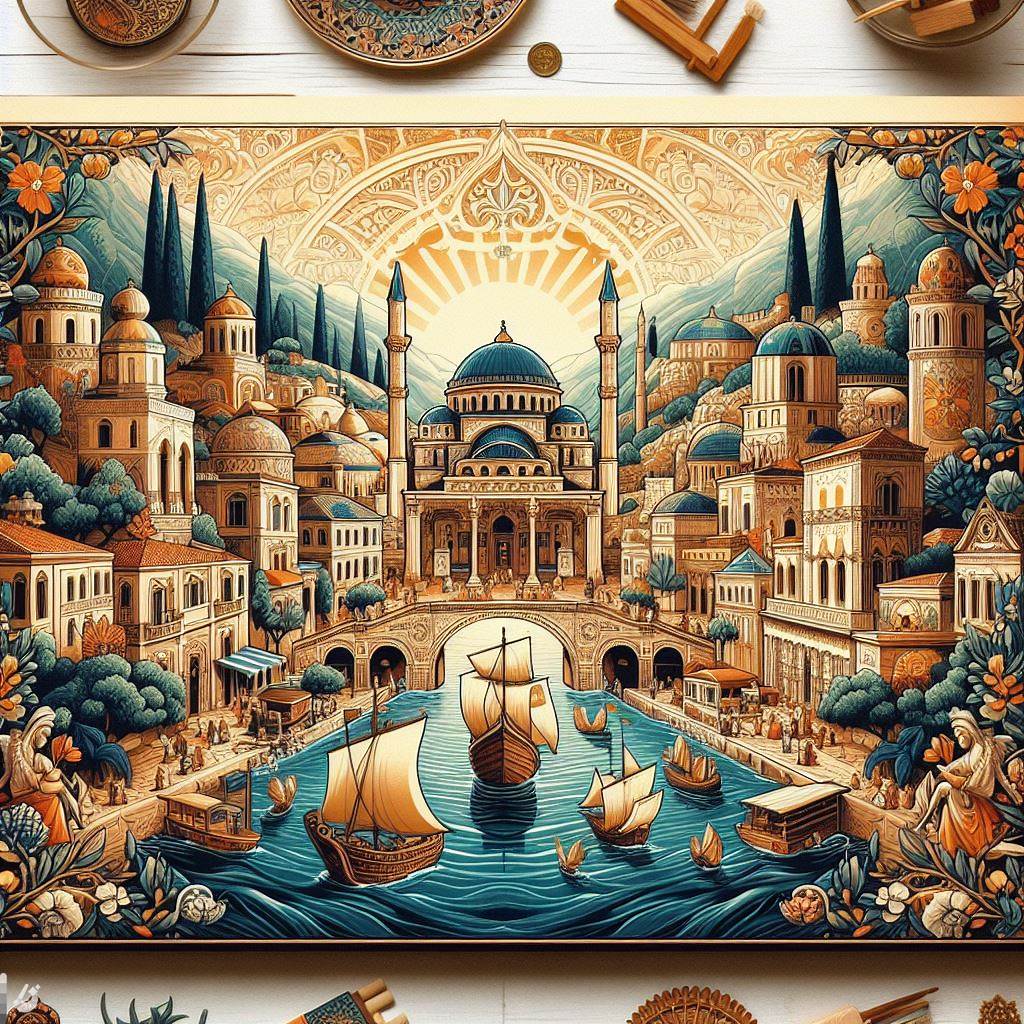News
How Fashion Giants Recast Plastic as Good for the Planet

An influential system overseen by retailers and clothing makers ranks petroleum-based synthetics like “vegan leather” as more environmentally sound than natural fibers.
It’s soft. It’s vegan. It looks just like leather.
It’s also made from fossil fuels.
An explosion in the use of inexpensive, petroleum-based materials has transformed the fashion industry, aided by the successful rebranding of synthetic materials like plastic leather (once less flatteringly referred to as “pleather”) into hip alternatives like “vegan leather,” a marketing masterstroke meant to suggest environmental virtue.
Underlying that effort has been an influential rating system assessing the environmental impact of all sorts of fabrics and materials. Named the Higg Index, the ratings system was introduced in 2011 by some of the world’s largest fashion brands and retailers, led by Walmart and Patagonia, to measure and ultimately help shrink the brands’ environmental footprints by cutting down on the water used to produce the clothes and shoes they sell, for example, or by reining in their use of harmful chemicals.
But the Higg Index also strongly favors synthetic materials made from fossil fuels over natural ones like cotton, wool or leather. Now, those ratings are coming under fire from independent experts as well as representatives from natural-fiber industries who say the Higg Index is being used to portray the increasing use of synthetics use as environmentally desirable despite questions over synthetics’ environmental toll.
“The index is justifying the choices fashion companies are making by portraying these synthetics as the most sustainable choice,” said Veronica Bates Kassatly, a fashion industry analyst and critic of the industry’s sustainability claims. “They’re saying: You can still shop till you drop, because everything is now so sustainably sourced.”
The Sustainable Apparel Coalition, which runs the index and counts among its members almost 150 brands, including H&M and Nike, as well as retail giants like Amazon and Target, said the index uses data that is scientifically and externally reviewed.
“This is years of work to compile and put together the best available most up-to-date data,” said Jeremy Lardeau, vice president of the Higg Index at the apparel coalition. “We’re not actively pushing for the synthetic numbers to be low. We’re just collecting the data in one place.”
Critics counter that some of the data underpinning the index comes from research that was funded by the synthetics industry that hasn’t been fully opened up to independent examination. Other studies incorporated into the Higg Index are sometimes relatively narrow in scope, raising questions about their broad, industrywide applicability.
The index rates polyester as one of the world’s most sustainable fabrics, for example, using data on European polyester production provided by a plastics-industry group, although most of the world’s polyester is made in Asia, usually using a dirtier energy grid and under less stringent environmental rules. The Higg rating for elastane, also known as Lycra or spandex, draws on a study by what was at the time the world’s largest elastane producer, Invista, a subsidiary of the conglomerate Koch Industries. (Invista sold its Lycra business in 2019.)
The Higg Index itself was born a decade or so ago amid a rising emphasis among consumers on sustainability, environmental and animal-welfare concerns. It coincided with advances in synthetic-based fabrics that were not only inexpensive but had new features that buyers craved, such as improved elasticity or improvements in the ability to wick away perspiration.
Many of the garment brands that sit on the board of the group that oversees the index profit from two fashion megatrends that directly benefited from advances in synthetics like these: fast fashion and athleisure. The fast fashion giant H&M, for instance, displays what it calls Higg-based sustainability profiles alongside some of its products.
“Higg’s members, a lot of them are fast fashion brands, and they all use mainly polyester. So it favors them to get polyester a better rating,” said Brett Mathews, chief editor of Apparel Insider, an industry-focused publication based in London. But the data used was “very poor,” he said, and “the net result is that the actual Higg score, which says this fiber is more sustainable than that one, is misleading to consumers.”
The Sustainable Apparel Coalition said company data was accurate and comprehensive, and had been collected in line with industry standards. Any gap between European and Chinese polyester production would be small compared to other differences in producing the textiles, like the knitting or weaving process, it said.
H&M, which sits on the coalition board, said the index was based on “standardized and verified third party information,” and that the tool was being “continuously developed and improved.” Walmart said the Higg was not the only tool it used to improve the sustainability of its apparel, and that it continued to assess the index’s capabilities. Invista did not respond to a request for comment.
The Higg Index is on its way to becoming a de facto global standard. In Europe, policymakers this year are set to lay out rules on how brands must back up their environmental claims, and in New York, a bill seeks to hold fashion brands accountable for their role in climate change. Fashion-industry officials have said the Higg Index could be used as a benchmark in both.
The fashion industry has long been under pressure to address the environmental effects of its products and practices. The industry is responsible for as much as 8 percent of the world’s emissions of planet-warming carbon dioxide, the United Nations estimates, more than all international flights and maritime shipping combined.
Natural materials, like cotton, have their own environmental costs, of course. Cotton and silk cultivation is water-intensive and can involve heavy pesticide use. Leather can come from well-managed ranches, or it can be tied to activities that are extremely damaging to the environment. Last year, a New York Times investigation showed how leather from cattle linked to deforestation in the Amazon was making its way to the United States to be used in automobile seats.
The production of polyester and other materials has tripled since 2000, to nearly 60 million tons a year, according to the Textile Exchange, an industry group. Silk and wool have declined over the same period, and cotton has risen more moderately.
Producers of natural fibers say the Higg Index has portrayed that shift as positive for the environment based on questionable data. Silk’s unfavorable rating in the index, for example, draws on a 2014 study by Oxford-based researchers of 100 silk farmers who rely on irrigation in a single state in India.
That study’s lead researcher, Miguel F. Astudillo, said he hadn’t known until recently that his work had been used by the Higg Index. He said his study of Indian silk, which is mostly used domestically, was not representative of global production. “If they read the article and the results, they’d know it’s a stretch to use it for assessing silk in general,” Dr. Astudillo said.
The International Sericulture Commission, which represents 21 silk-producing countries, last year filed a complaint with the Federal Trade Commission accusing the Higg ratings of “creating considerable damage to the natural fiber industry” and calling on the index to carry out a broader study of global production practices.
“They’re saying silk is 30 times worse than synthetic products. Can anyone really believe that?” said Dileep Kumar of the International Sericulture Commission.
In 2020, leather-industry groups from around the world also called on the Sustainable Apparel Coalition to suspend its poor score for leather, which the industry said was based on “out-of-date, unrepresentative, inaccurate and incomplete data.”
The rise of vegan leather, which is typically made from polyurethane, a type of plastic that has a more favorable Higg rating, has brought unintended consequences, industry officials say. Even as leather is replaced by synthetics, Americans are still eating lots of beef — which means the hides from those slaughtered cattle have nowhere to go. In 2020, a record 5 million hides, or about 15 percent of all available, went to landfills, according to the U.S. Hide, Skin and Leather Association, a Washington-based trade group.
“They’re throwing the hides in the offal barrels out back,” said Ron Meek, a former meat processor who has been helping smaller plants weather the downturn in leather demand.
News
Ultimate Guide To Understanding Örviri: History, Traditions, And Culture

Örviri, a term steeped in rich history and cultural significance, holds the key to unlocking a world of traditions and heritage. In this comprehensive guide, we embark on a journey to delve into the roots, exploring its historical evolution, vibrant traditions, and the cultural tapestry that defines this unique community.
Ancient Roots and Evolution
Örviri history traces back through the annals of time, unveiling a narrative shaped by ancient civilizations and cultural amalgamations. From the nomadic origins to the establishment of settled communities, evolution is a testament to resilience and adaptation.
Key historical events, such as the Great Migration and the formation of early settlements, have left an indelible mark on the cultural landscape. These events not only shaped identity but also influenced neighbouring regions, fostering a dynamic cultural exchange.
Key Historical Figures
Within the pages of Örviri history, we encounter captivating figures whose contributions echo through the ages. Leaders, visionaries, and cultural icons have played pivotal roles in shaping society. Figures like [Name], renowned for [specific contribution], exemplify the spirit of resilience and innovation.
Rituals and Ceremonies
Örviri traditions are alive with rituals and ceremonies, each holding profound significance in the cultural fabric. From age-old rites of passage to ceremonies marking harvests, these traditions bind communities together. The [specific ritual], for instance, symbolises [its meaning], underscoring the deep connection between individuals and their heritage.
Festivals and Celebrations
Örviri festivals are vibrant expressions of communal joy and cultural pride. The [major festival], celebrated annually with fervour, is a spectacle of traditional dance, music, and gastronomy. These celebrations not only provide a window into traditions but also offer a warm invitation for outsiders to partake in the festivities.
Lifestyle and Daily Routines
The Örviri way of life is characterised by a harmonious balance between tradition and modernity. Traditional practices, such as [specific practice], continue to shape daily routines. Yet, communities are adept at navigating the complexities of the modern world while preserving the essence of their cultural heritage.
Art and Craftsmanship
Artistic expressions, whether in pottery, weaving, or storytelling, reflect a deep connection to nature and community. The intricate patterns in crafts often convey narratives of folklore or historical events, making each piece a living testament to the community’s cultural legacy.
Örviri Social Structure
Örviri social structure revolves around strong familial ties and communal bonds. Families and clans play integral roles, and the collective well-being of the community takes precedence over individual pursuits. Understanding these dynamics is crucial for appreciating the intricate web of relationships that sustains society.
ommunication and Language
Characterised by their uniqueness and diversity, are the linguistic threads that weave communities together. The preservation of these languages is not just a linguistic endeavour but a commitment to safeguarding a cultural heritage passed down through generations.
Örviri in the Modern World
In an era of globalisation, Örviri communities are faced with the challenge of preserving their cultural identity. Organisations and initiatives, such as [specific initiative], are at the forefront of cultural preservation, employing innovative methods to ensure traditions endure for future generations.
Contemporary Issues
Örviri communities navigate a complex landscape, balancing tradition with the demands of the modern world. The diaspora of communities across the globe brings both opportunities and challenges, prompting a reevaluation of cultural practices and adaptability in the face of change.
Travelling to Örviri Regions
For those eager to immerse themselves in Örviri culture, respectful tourism practices are paramount. Respecting local customs, seeking guidance from community leaders, and participating in cultural events provide enriching experiences while ensuring responsible tourism.
Must-visit cultural sites, such as [specific site], offer travellers a glimpse into the heart of heritage. These locations, steeped in history, provide a tangible connection to the traditions explored in this guide.
Frequently Asked Questions about Örviri
Dispelling myths about Örviri culture is essential for fostering understanding and appreciation. Contrary to [myth], culture is [fact]. Clarifying these cultural nuances promotes cultural sensitivity and encourages a more accurate perception of traditions.
Resources for Further Learning
For those eager to delve deeper into culture, a wealth of literature awaits. [Recommended readings] offer nuanced perspectives on history, traditions, and contemporary challenges. Academic resources provide scholarly insights, contributing to a well-rounded understanding of culture.
Cultural Experiences
Immersive experiences, such as attending cultural events and festivals, offer unparalleled opportunities for learning and connection. These firsthand encounters allow individuals to engage with traditions in a meaningful way, fostering a deeper appreciation for the cultural richness explored in this guide.
Conclusion
In concluding our exploration of Örviri history, traditions, and culture, we find a tapestry woven with resilience, diversity, and timeless beauty. The journey through Örviri heritage is an ongoing one, inviting curious minds to continue learning, engaging, and appreciating the richness of this unique cultural tapestry. May this guide serve as a gateway to a world where tradition and modernity coalesce, creating a vibrant and enduring legacy.
News
Cameron Herren: Pioneering Innovation and Leadership

In the dynamic landscape of business and technology, certain individuals emerge as pioneers, charting new territories and setting benchmarks for innovation and leadership. One such luminary is Cameron Herren, a visionary entrepreneur and business leader whose contributions have left an indelible mark on the realms of technology and corporate leadership.
Early Life and Education
Cameron Herren’s journey into the world of innovation began with a strong foundation in education. Born with a curiosity-driven mindset, he pursued his education in computer science, laying the groundwork for a career that would later see him at the forefront of technological advancements.
Entrepreneurial Spirit
Herren’s entrepreneurial journey started with the founding of his first startup, a venture that aimed to bridge the gap between technology and everyday life. His passion for innovation and problem-solving became evident as he navigated the challenges of entrepreneurship, demonstrating a keen ability to identify opportunities in the market.
Tech Visionary
Cameron Herren’s impact on the technology sector is particularly noteworthy. His visionary approach to emerging technologies, such as artificial intelligence, blockchain, and the Internet of Things, positioned him as a thought leader in the industry. Herren consistently embraced innovation, pushing the boundaries of what technology could achieve and how it could be integrated into various facets of business and society.
Leadership Style
At the core of Cameron Herren’s success is his distinctive leadership style. Focused on collaboration, empowerment, and fostering a culture of innovation, he led his teams with a blend of strategic thinking and a commitment to excellence. Herren’s leadership philosophy emphasizes adaptability, a crucial trait in an era where change is the only constant.
Corporate Successes
Herren’s career is punctuated with numerous corporate successes. Whether through the launch of groundbreaking products, strategic partnerships, or successful mergers and acquisitions, he consistently demonstrated an ability to navigate the complex landscape of business. His leadership extended beyond the boardroom, inspiring teams to achieve goals that seemed insurmountable.
Philanthropy and Social Impact
Beyond his professional endeavors, Cameron Herren is also recognized for his commitment to philanthropy and social impact. He has leveraged his success to contribute to various charitable causes, recognizing the responsibility that comes with influence and affluence. Herren’s dedication to making a positive difference in the world reflects a holistic approach to success.
Legacy and Future Endeavors
As Cameron Herren continues to shape the future of technology and business, his legacy stands as a testament to the power of innovation and visionary leadership. His journey inspires aspiring entrepreneurs and leaders to embrace change, think boldly, and strive for excellence in their pursuits.
Conclusion
In the ever-evolving landscape of business and technology, Cameron Herren stands as a beacon of innovation and leadership. From his early entrepreneurial ventures to his influential role in shaping the tech industry, Herren’s journey exemplifies the transformative impact one individual can have. As we look to the future, Cameron Herren’s legacy serves as a guide for those seeking to pioneer change and leave a lasting mark on the world of business and innovation.
News
Maria Gjieli: A Rising Star in the World of Music

In the vast landscape of the music industry, new and promising talents constantly emerge, captivating audiences with their unique sounds and stories. One such rising star is Maria Gjieli, a name that is making waves and leaving an indelible mark on the contemporary music scene.
Early Life and Background
Maria Gjieli’s journey in the world of music began with her roots deeply embedded in a family of musicians and artists. Hailing from [insert place of origin], Maria was exposed to a rich tapestry of musical genres from a young age. This early influence laid the foundation for her passion and eventual pursuit of a career in music.
Artistic Style and Influences
Maria Gjieli is known for her distinctive artistic style that seamlessly blends various genres, creating a sound that is both familiar and refreshingly innovative. Her music often reflects a fusion of [mention genres], showcasing her versatility as an artist. Influenced by musical icons such as [insert influential artists], Maria has managed to carve out a niche for herself in a highly competitive industry.
Breakthrough Moments
Every artist has defining moments that mark their ascent to stardom. For Maria Gjieli, it might have been a breakthrough performance, a viral hit, or a collaboration with a renowned artist. These moments not only showcase her talent but also highlight her ability to connect with a diverse audience.
Notable Achievements
Maria Gjieli’s journey is studded with noteworthy achievements that underscore her growing impact in the music world. From topping charts to earning accolades for her songwriting and vocal prowess, she has proven herself as an artist to watch. Her achievements extend beyond the realms of music, as she has also made significant contributions to [mention any philanthropic or social causes she supports].
The Evolution of Maria Gjieli
As an artist evolves, so does their music. Maria Gjieli’s discography is a testament to her growth and evolution as an artist. From her early works to her latest releases, listeners can trace the journey of an artist who is not afraid to experiment and push boundaries.
Fan Base and Global Appeal
In the age of social media and digital connectivity, artists can amass a global fan base almost overnight. Maria Gjieli is no exception, with fans spanning across continents. Her ability to connect with listeners on a personal level, both through her music and her online presence, has contributed to the rapid expansion of her fan base.
Future Prospects and Projects
The future looks bright for Maria Gjieli as she continues to explore new horizons in her musical career. Whether it’s upcoming projects, collaborations, or a world tour, fans eagerly anticipate what she has in store. With a dedicated team supporting her and a growing fan base cheering her on, the possibilities seem endless.
Conclusion
Maria Gjieli’s rise in the music industry is a testament to the power of talent, hard work, and a genuine connection with the audience. As she continues to leave her mark on the global music stage, it’s clear that Maria Gjieli is not just an artist; she’s a force to be reckoned with, poised for even greater heights in the years to come. Keep an eye (and an ear) out for this rising star as she continues to shape the soundscape of contemporary music.
-

 News2 years ago
News2 years agoDr. Naval Parikh: Hypertension Types, Causes, Symptoms & Treatment
-

 News2 years ago
News2 years agoDr. Naval Parikh: Allergy Types, Causes, Symptoms & Treatment
-

 News2 years ago
News2 years agoDr. Naval Parikh: Asthma Causes, Symptoms and Treatment Options
-

 Celebrity4 years ago
Celebrity4 years agoYoung Irish Star Signs to DJ John Gibbons’ label
-

 News3 years ago
News3 years ago8 Best Sites Like VIPLeague to Watch Free Sports in 2021
-

 News1 year ago
News1 year agoTinyZone: WatchFree Movies Online
-

 News2 years ago
News2 years agoTampa Van Hire
-

 Uncategorized2 years ago
Uncategorized2 years agoInstagram’s Most Popular Product Niche












